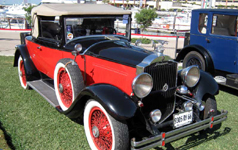 |
| works by Abdulla al Awadi |
 |
| works by William Andersen |
Sultan Gallery hosted last week a collective exhibition with the Title: Kuwait 50 20. It is the month of celebration in Kuwait for their independence, their liberation. Among other artists were Abdulla al Awadi, professor of Architecture at Kuwait University and William Andersen, professor of Art at American University of Kuwait.
William's works were a grid of 50 by 50 pieces of 8 star shaped plaster with a significant photo collage on the subject, Kuwait. The images were about history, politics, islamic references, major moments that make the Kuwait of today, major events of the region, wars, elections all on a background of islamic patterns or geometrical patterns.
Abdulla's work were canvas printed of intricate geometrical shapes produced with smaller images of kuwait. One canvas had the word Kuwait twisted in another pattern of calligraphy over the global production.
The correlation of these two works is quite striking. Both works have gone far in the details of research, finding history through icons or images, debating on the format, pondering on the significance of a country and how to present it. Their works are quite advanced which indicates an in depth understanding of the medium.
Although they remain at the surface of images, it is part of a general trend in Kuwait to keep the image of the country at the facade only. The decorative part is emphasised, keeping deeper subjects further away.
Thomas Modeen had few other works displayed, It was a delicate paper cut ripple effect of white on white in a near A4 size. Could it have anything to do with the 50 20 title? nevertheless it was a pleasant interpretation of texture and paper.
The giant blackberry phone was another striking artwork, maybe an installation, maybe a tribute to the importance in kuwait of social networking, chatting and connecting at all times with friends, facebook and google.










